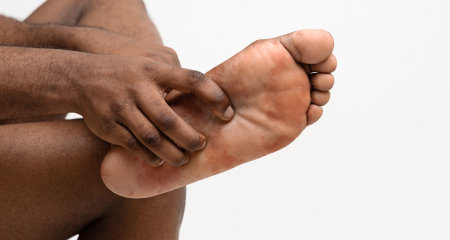
Warts, while a widespread affliction, disproportionately impact school-aged children, especially during the age bracket of 12-16 years. The adept dermatologists at Northstar Dermatology in Texas underscore the value of professional intervention. Warts, if untreated, remain not only persistent but also serve as hubs for the virus’s transmission. To delve into the vast world of warts and the multitude of treatment avenues available in Texas, either get in touch with our Texas office or conveniently book an online consultation.
Warts are growths that can occur anywhere on the skin or mucosal membranes. They are most commonly found on the elbows, hands, knees and feet. They are sometimes painless, but they can also be painful. They are caused by a virus called the human papillomavirus (HPV). The virus causes a thickening of the top layer of the skin. Warts are contagious, meaning they can spread from person-toperson and can spread to other parts of the body
Warts can come in many different forms. There can be individual warts or groups of warts. Sometimes, there are several small black “dots” inside of warts that are caused by tiny blood vessels.
Common warts are usually thickened, rough bumps that can occur on the hands, elbows, knees and face. They typically are gray, brown or pink.
Plantar warts occur on the bottom of the foot and are rough and thick. Sometimes, they can look like calluses. These are more commonly painful, especially on weight-bearing areas.
Flat warts are usually smaller and smoother than other warts. They can be pink, skin-colored or light brown. They are typically found in groups that are clustered together.
Filiform warts have “finger-like” projections and are commonly found of the face
If warts are painful, bleeding, or on the face or genital area, you should seek medical intervention. You should also seek treatment if warts start to spread.
There are multiple types of treatments available for wart management. The following list is not exhaustive. Warts are very persistent and may require multiple attempts at treatment, sometimes combining treatment modalities. Warts may need to be pared down, or the thickened skin may need to be scraped off of warts. Other treatments include freezing with liquid nitrogen, applying Cantharidin (or “beetle juice”), applying prescription creams (5-fluorouracil 5% cream, imiquimod, Retin-A) and injecting
with liquid agents that destroy the warts. Efficacy of treating warts may be increased when combining multiple treatments together.
